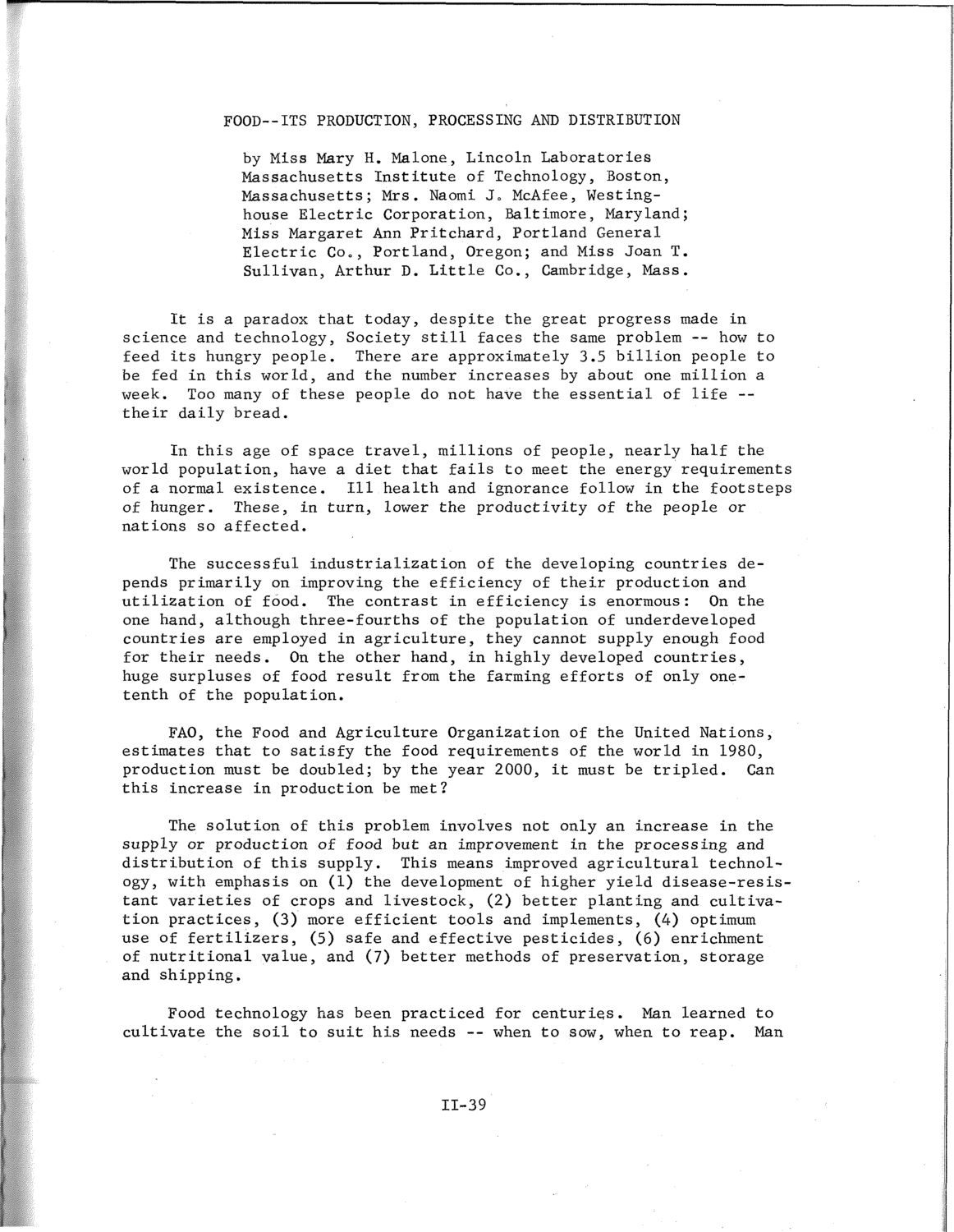| |
| |
Caption: SWE - Proceedings of the First International Conference of Women Engineers and Scientists
This is a reduced-resolution page image for fast online browsing.

EXTRACTED TEXT FROM PAGE:
FOOD--ITS PRODUCTION, PROCESSING AND DISTRIBUTION by Miss Mary H. Malone, Lincoln Laboratories Massachusetts Institute of Technology, Boston, Massachusetts; Mrs. Naomi J„ McAfee, Westinghouse Electric Corporation, Baltimore, Maryland; Miss Margaret Ann Pritchard, Portland General Electric Co 0 , Portland, Oregon; and Miss Joan T. Sullivan, Arthur D. Little Co., Cambridge, Mass. It is a paradox that today, despite the great progress made in science and technology, Society still faces the same problem -- how to feed its hungry people. There are approximately 3.5 billion people to be fed in this world, and the number increases by about one million a week. Too many of these people do not have the essential of life -their daily bread. In this age of space travel, millions of people, nearly half the world population, have a diet that fails to meet the energy requirements of a normal existence. Ill health and ignorance follow in the footsteps of hunger. These, in turn, lower the productivity of the people or nations so affected. The successful industrialization of the developing countries depends primarily on improving the efficiency of their production and utilization of food. The contrast in efficiency is enormous: On the one hand, although three-fourths of the population of underdeveloped countries are employed in agriculture, they cannot supply enough food for their needs. On the other hand, in highly developed countries, huge surpluses of food result from the farming efforts of only onetenth of the population. FAO, the Food and Agriculture Organization of the United Nations, estimates that to satisfy the food requirements of the world in 1980, production must be doubled; by the year 2000, it must be tripled. Can this increase in production be met? The solution of this problem involves not only an increase in the supply or production of food but an improvement in the processing and distribution of this supply. This means improved agricultural technology, with emphasis on (1) the development of higher yield disease-resistant varieties of crops and livestock, (2) better planting and cultivation practices, (3) more efficient tools and implements, (4) optimum use of fertilizers, (5) safe and effective pesticides, (6) enrichment of nutritional value, and (7) better methods of preservation, storage and shipping. Food technology has been practiced for centuries. Man learned to cultivate the soil to suit his needs -- when to sow, when to reap. Man 11-39
| |